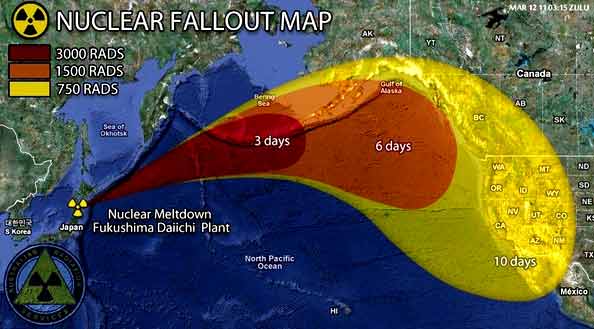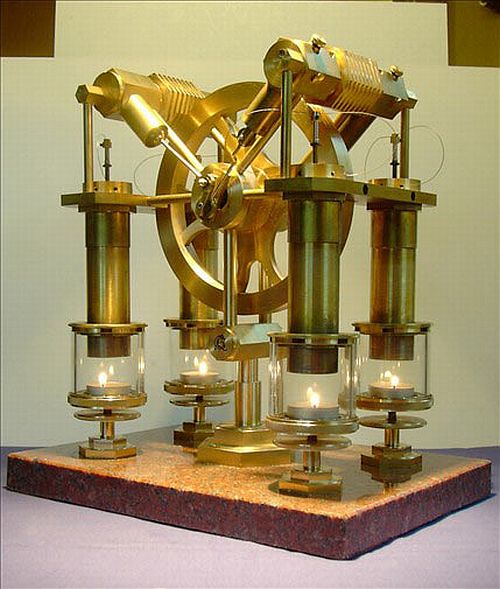Georgetown University (Washington DC), President Barack Obama delivered one of the most anticipated speeches in recent months in which he announced the National Plan on Climate Change. In it he presented his vision of the measures his government will take to prepare the country for the effects of climate change and the need to combine these efforts with other countries around the world to combat this serious problem.
According to data provided by the White House, the 2012 was the year with more extreme temperatures in the United States, a third of the population lived for over a hundred days to an average of 37.5 degrees and weather derivatives disaster effect emissions cost the nation 100,000 million.
Given these data and on the mission, expressed in many occasions, “leaving a better world for our children and grandchildren,” Obama has presented the main points of a plan that has the support of the political class, or the environmentalists, but the basis for fighting the problem affecting harshly United States in recent years.
President Obama’s Climate Action Plan focuses on:
– Regulating Greenhouse Gas Emissions
– Energy Efficiency
– Renewable Energy
– Natural Gas
– Leading by Example
– Climate Resilience
– International Climate Change Leadership
The project includes setting first limits on polluting industry and promotion, through financial assistance and other facilities to operate on public land, the production of wind and solar energy.
According to the White House , this action plan should allow the United States to fulfill the commitments made by the President in the climate summit in Copenhagen in 2009 , to 2020 to reduce emissions of greenhouse gas by 17 percent , compared with 2005 levels .
Obama argued that Americans ” are already paying the price of inaction ” , describing 2012 as the warmest year in history , which ended up affecting agricultural crops in the Midwest .
“The question is whether we have the courage to act before it is too late and how they respond will have a profound impact on the world we will leave to our children and grandchildren,” said Obama , who highlighted the afternoon heat today in Washington to underscore its new environmental plan. “As president, as a parent and as an American , I’m here to tell you that we have to act,” he said.
Obama said he had asked the EPA to develop rules to regulate carbon emissions from power plants that burn coal and are responsible for 40 % of the carbon dioxide pollution .
” Power plants still emit unlimited amounts of carbon dioxide free air quantities. That’s not right , is not safe and must stop,” the president claimed .
The president also said the controversial Keystone XL pipeline project between Canada and the United States may only be approved if its implementation requires not increase emissions of greenhouse gases .
“Our national interest is maintained only if the project does not significantly exacerbates the problem of carbon pollution ,” Obama said in a speech at Georgetown University .
Obama’s plan basically skirt the obstacles found earlier proposals to regulate power plants in Congress, where his Republican opponents have opposed the measure , arguing it would be too costly or doubt about the scientific evidence behind climate change .
” We do not have time for a meeting of the Association of the Flat Earth ” joked the president.
Obama proposed 8,000 million in loan guarantees to support investments in new technologies in extraction of fossil resources and energy efficiency, and asked “strengthen” U.S. production of natural gas to get ” clean and safe ” energy in the medium term.
The new White House plan also provides for the granting of permits for renewable energy projects , solar or wind to produce enough electricity to more than six million people by 2020.
The federal government itself increase by 20 % the total energy consumed by renewable sources in the next seven years , Obama promised .
But the president acknowledged that despite these efforts , the planet will continue to warm “for a while ” and announced provisions to protect U.S. territory from the effects of rising sea levels and storms. “It will take time for carbon emissions stabilize,” he said.
The Secretary of State , John Kerry , a senator who led several unsuccessful efforts to reduce greenhouse gas emissions , stressed that the plan demonstrates the seriousness of the U.S. in the climate issue and called on other countries to do more.
” The decisive action at home empowers us to make further progress at the international level on a shared challenge,” Kerry said during a visit to Kuwait, a major producer of crude.
Obama pledged to withdraw support to the construction Sites of coal burning power plants and promote global free trade in technologies that help reduce pollution.
” If we get that agreement can establish a sustainable future for this generation ,” he said .
Reduction in CO2 Emission
United States announced first limits on emissions of carbon dioxide (CO2) of new power plants that run on gas and coal in order to combat climate change.
Power plants and coal gas are responsible for a third of the emissions of greenhouse gases in the United States.
Under this proposal, future plants to natural gas will have to limit emissions of carbon dioxide (CO2) to 453 kilos per megawatt-hour, and 499 kilos per megawatt-hour for smaller units.
As for new coal-fired power plants, they can not exceed 499 kilos per megawatt-hour with the ability to opt out means stricter limits, but spread over several years.
Currently the most modern coal-fired plants produce about 800 kilos per megawatt-hour, according to the industry.
An army of megawatts
In addition, Obama announced that federal agencies are working on a new target -100 MW renewable power to be installed by the year 2020 all residential buildings subsidized by the administration (six million households). The Climate Change Plan Obama is also set in the army of the United States Department of Defense is the largest energy consumer in the United States, has been located, says the Obama-Plan to implement 3,000 MW of energy renewables in its military facilities by 2025.
The automobile industry
Additional Plan announces that after 2018, and in collaboration with industry and other key industry players, the Administration “develop”-from 2018 – consumption patterns for heavy road transport still demanding in order to further reduce the fuel consumption per unit. Finally, the Obama Administration is committed to supporting the implementation of patterns also for renewable fuels and investing in research and development in next generation biofuels. According to the Environmental Protection Agency (U.S. EPA), in 2011 (latest data available) the electricity sector was the main cause of emissions of greenhouse gases (GHG) in the country (33% of total); transport was the second (28%).
…And saving
Meanwhile, the Obama plan aims to double energy efficiency by 2030 (relative to that recorded in 2010). In autumn 2013 , was put into operation a plan , and plans to put a program in place to finance subsidies efficiency investments in rural communities valued at $ 250 million . Among the achievements already made , the Obama Plan cites the Better Buildings Initiative , launched in 2011 with the aim of helping industrial and commercial buildings to be 20 % more efficient in 2020: “So far , says the Plan- more 120 organizations have joined to it. ” They have also been driven projects on energy efficiency in the home . Projects under the plan , have already benefited more than one million homes , ” many families are saving over $ 400 on your heating bills and air conditioning in the first year.” The Obama Plan announces the expansion of multifamily housing plan on a long horizon : 2020 .
But as I always say, not all that glitters is gold here so here I leave a link, which will help you to understand the reality that can hide or not this ambitious plan. (http://www.climatecentral.org/news/qa-breaking-down-key-features-of-obamas-climate-plan-16154)
Sources
http://www.whitehouse.gov/sites/default/files/image/president27sclimateactionplan.pdf
http://www.energias-renovables.com/articulo/obama-el-clima-de-opinion-y-el-20130626
http://www.programapaiseficienciaenergetica.cl/energia/eeuu-limitara-emisiones-de-co2-de-nuevas-centrales-electricas/
http://www.climatecentral.org/news/qa-breaking-down-key-features-of-obamas-climate-plan-16154

























